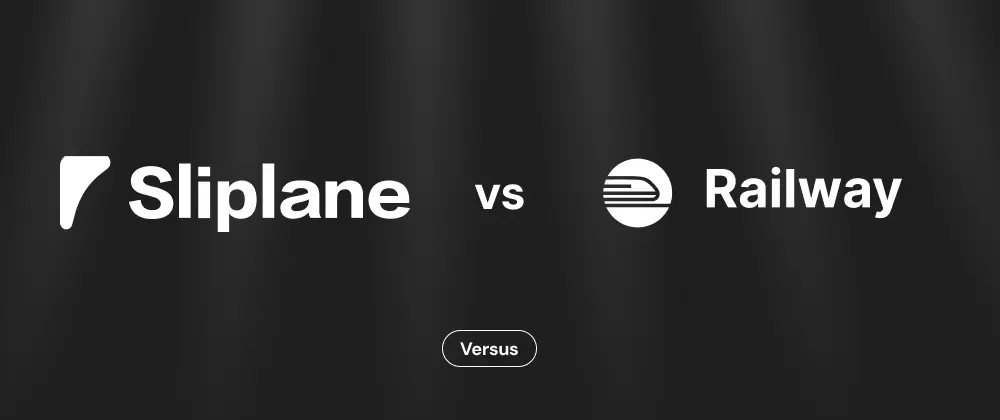
Sliplane vs. Railway
 Jonas Scholz
Jonas ScholzSliplane takes a radically different approach to container hosting. Instead of charging per service or usage, you rent a server and run as many containers as it can handle for one fixed monthly price.
How It Works
Here's the simple concept: You rent a server (starting at 2 vCPUs / 2GB RAM for €9/month), and you can run as many containers as it can handle.
Want to host:
- A frontend app
- A backend API
- A PostgreSQL database
- An n8n automation workflow
- A Redis cache
- A monitoring service
All on one €9/month server? Go for it. Your cost stays the same whether you run 1 container or 20.
The Railway Challenge: Usage-Based Billing
Railway has built a solid platform with great developer experience, but their usage-based billing model creates some challenges:
The pricing structure:
- Each service = separate billing meter
- Always-on services rack up charges 24/7
- Bandwidth costs at $0.05/GB egress
- Multiple apps mean multiple billing meters running simultaneously
Real costs:
- Running a simple web app with 1GB RAM continuously: ~$33/month
- Add a database, background worker, and microservices: $100+ easily
- Want to experiment with 5 different side projects? That's 5x the usage charges
One-Click Open Source Deployments
Both platforms make it easy to deploy popular open source tools, but with different cost implications:
Railway:
- Great template marketplace with 1000+ apps
- Each deployed template adds to your usage bill
- Want to run n8n, Langflow, and Open WebUI? That's 3 separate services billing you
Sliplane:
- Built-in presets for popular tools (n8n, databases, AI tools)
- One-click deployment with zero additional cost
- Run as many open source tools as your server can handle
Here is a demo showing how you can deploy n8n in less than 1 minute:
When Railway Makes Sense
Let's be fair - Railway isn't always the wrong choice:
- Variable workloads that can scale to zero during idle periods
- Single high-traffic applications that need dynamic scaling
- Teams that prioritize collaboration features and preview environments
- Projects where you don't mind usage-based billing complexity
Railway's developer experience is genuinely excellent. Their UI is polished, deployments are fast, and features like preview environments are handy for teams.
Real-World Example: Running an AI Side Project
Let's say you're building an AI-powered tool that needs:
- A Next.js frontend
- A Python backend with ML models
- A PostgreSQL database
- A Redis cache for sessions
- Background job processing
- Monitoring and logging
On Railway:
- 5 separate services billing you continuously
- Estimated monthly cost: $80-120 (assuming moderate usage)
- Costs scale with traffic and processing
On Sliplane:
- All services on one server
- Fixed monthly cost: €24 (depending on server size)
- Predictable billing regardless of usage spikes
The difference? Railway could cost you 4-6x more for the same functionality.
The Bottom Line
Railway is solid for single apps with variable workloads, but if you're running multiple services or need predictable costs, Sliplane's fixed-price model saves you money and headaches.
Got questions about migrating from Railway? Drop me a line - I'd love to help you make the switch.
Cheers,
Jonas, Co-Founder of sliplane.io